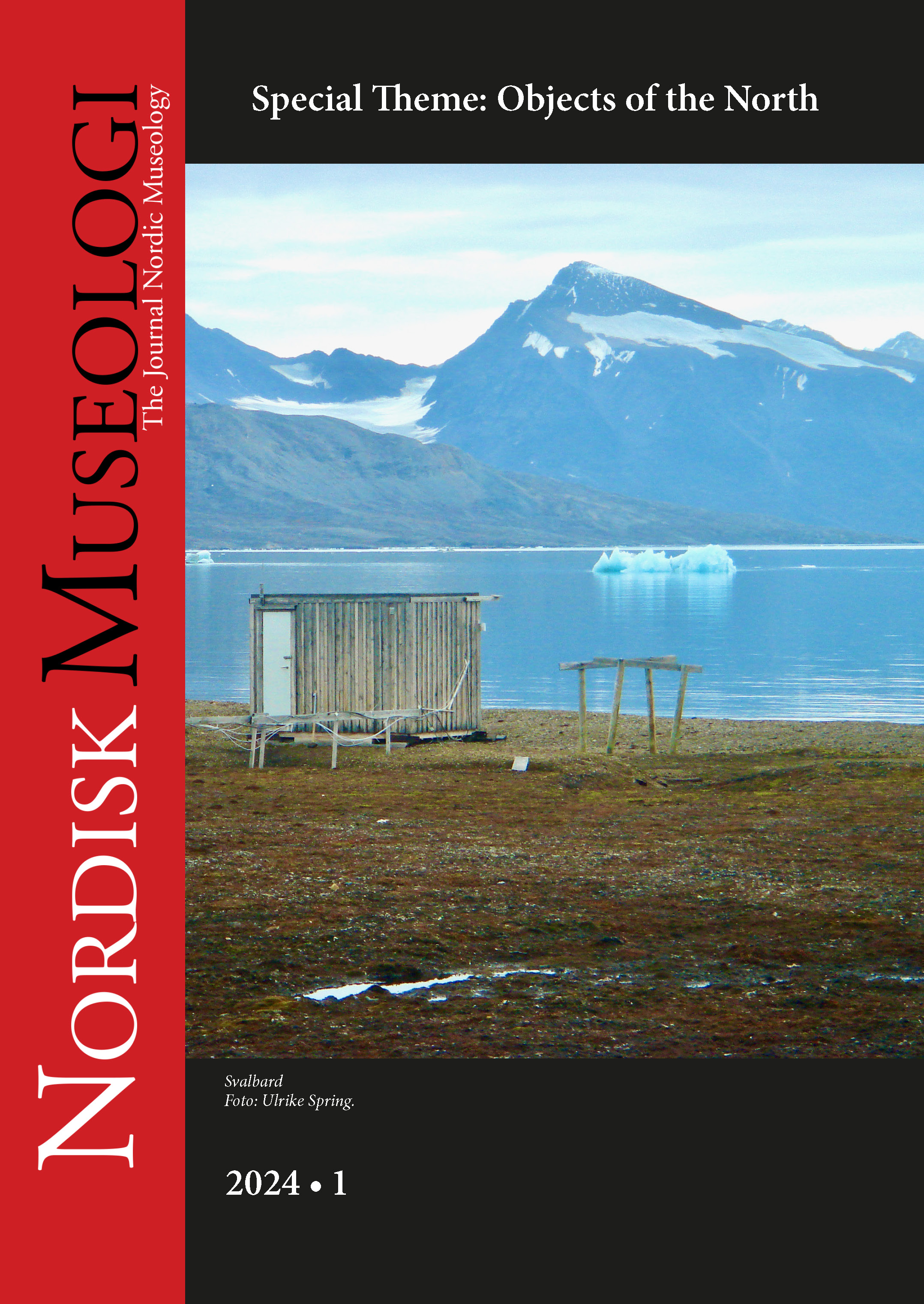Tourism, Im/mobility and the University Collections in Norway, 1870–1914
DOI:
https://doi.org/10.5617/nm.11592Abstract
This article explores the cultural collections at Det Kongelige Frederiks Universitet in Christiania (now Oslo) from the perspective of German-language tourists between the 1870s and 1914. It takes for its starting point the early history of tourism and museum collections as a story of the entanglement of the mobile and the immobile, of movement and stoppage. It argues that examining this entanglement provides insight into the complex processes of nation-building, which are formed in an interplay between tourist ascriptions and national self-images. Moreover, the museum objects’ spatial relations – the location and context in which they were exhibited – had a decisive impact on their perception and interpretation. Using guidebooks and travelogues as primary sources, the article discusses four of the most popular collections: the Viking ships, stave church portals, Sámi artefacts and objects brought back from the Gjøa expedition, in particular artefacts made by the Netsilingmiut/Nattilik.
Downloads
Published
Issue
Section
License
Contents published in editions of The Journal Nordic Museology in volumes predating 2017 are protected by the Norwegian Law of Copyright. This means that text and images published in these volumes can only be shared and republished with written permission from the author and/or photographer. Starting from 2017, the content published in The Journal Nordic Museology is - unless otherwise stated - licensed through Creative Commons Licence CC BY-NC-ND.4.0. This means that content can be copied, distributed and disseminated in any medium or format under the following terms:
- Attribution — You must give appropriate credit, provide a link to the license, and indicate if changes were made. You may do so in any reasonable manner, but not in any way that suggests the licensor endorses you or your use.
- Non-Commercial — You may not use the material for commercial purposes.
- No Derivatives — If you remix, transform, or build upon the material, you may not distribute the modified material.
- No additional restrictions — You may not apply legal terms or technological measures that legally restrict others from doing anything the license permits.
Notices:
- You do not have to comply with the license for elements of the material in the public domain or where your use is permitted by an applicable exception or limitation.
- No warranties are given. The license may not give you all of the permissions necessary for your intended use. For example, other rights such as publicity, privacy, or moral rights may limit how you use the material. Authors who publish in Nordic museology accept the following conditions:
Authors(s) retains copyright to the article and give Nordic Museology right to first publication while the article is licensed under the Creative Commons Lens CC BY-NC-ND 4.0 This license allows sharing the article for non-commercial purposes, as long as the author and first publishing place (The Journal Nordic Museology) is credited. The license does not allow others to publish processed versions of the article without the author's permission.
The author is free to publish and distribute the work/article after publication in Nordisk Museologi, while referring to the journal as the first place of publication. Submissions that are under consideration for publication or accepted for publication in Nordisk Museology cannot simultaneously be under consideration for publication in other journals, anthologies, monographs or the like. By submitting contributions, the author accepts that the contribution is published in both digital and printed editions of Nordisk Museology. For more about publication, see the Author Guidelines.



